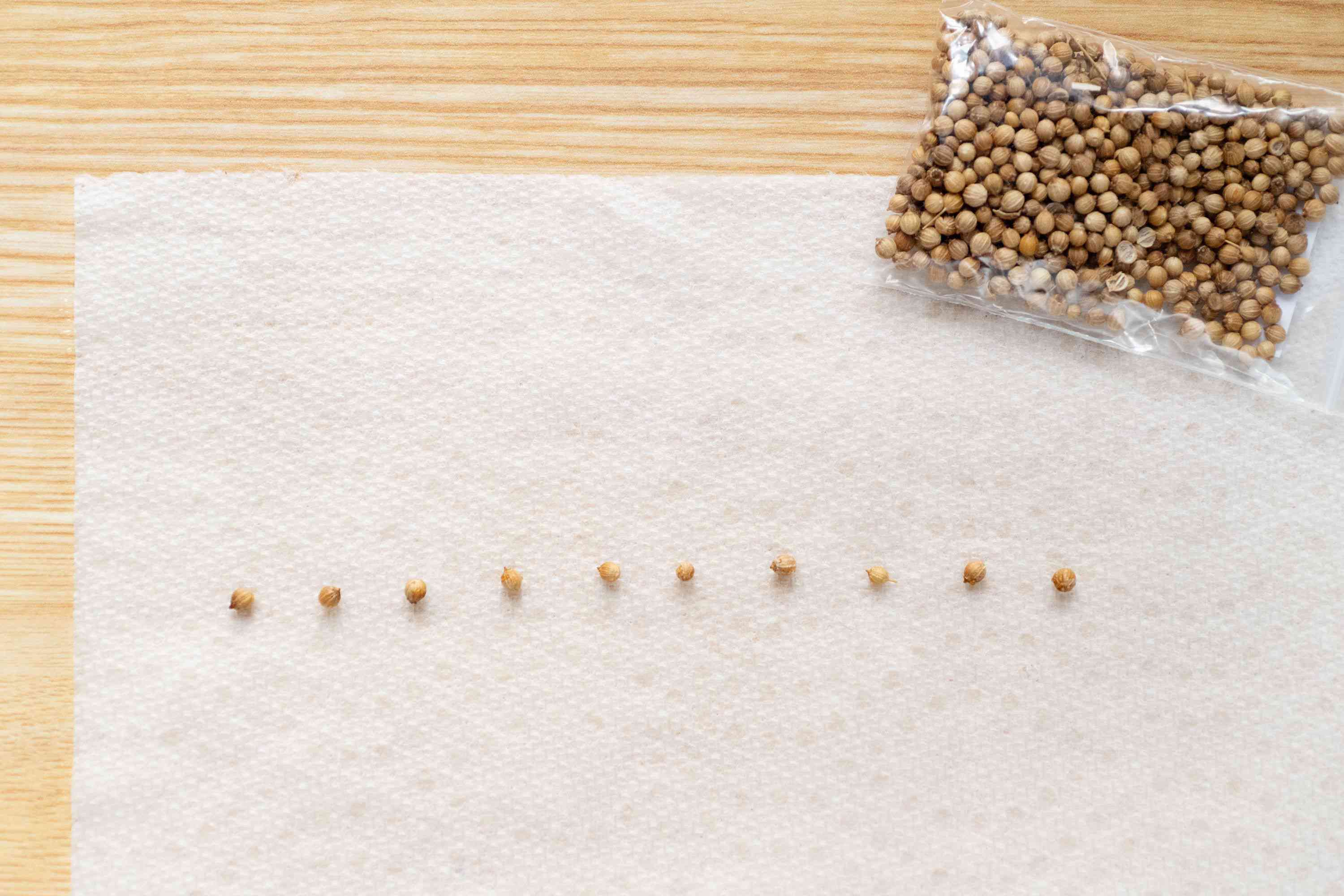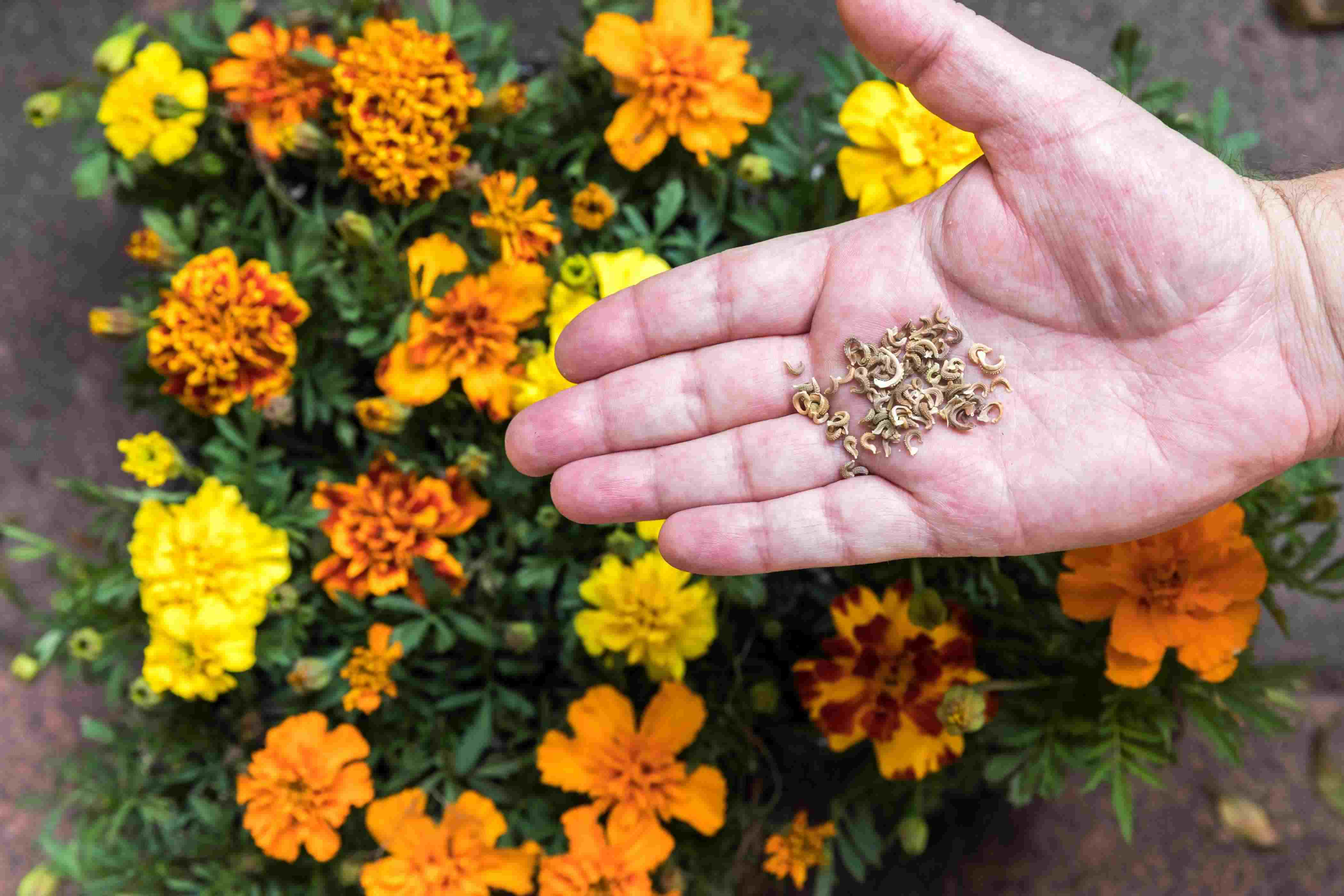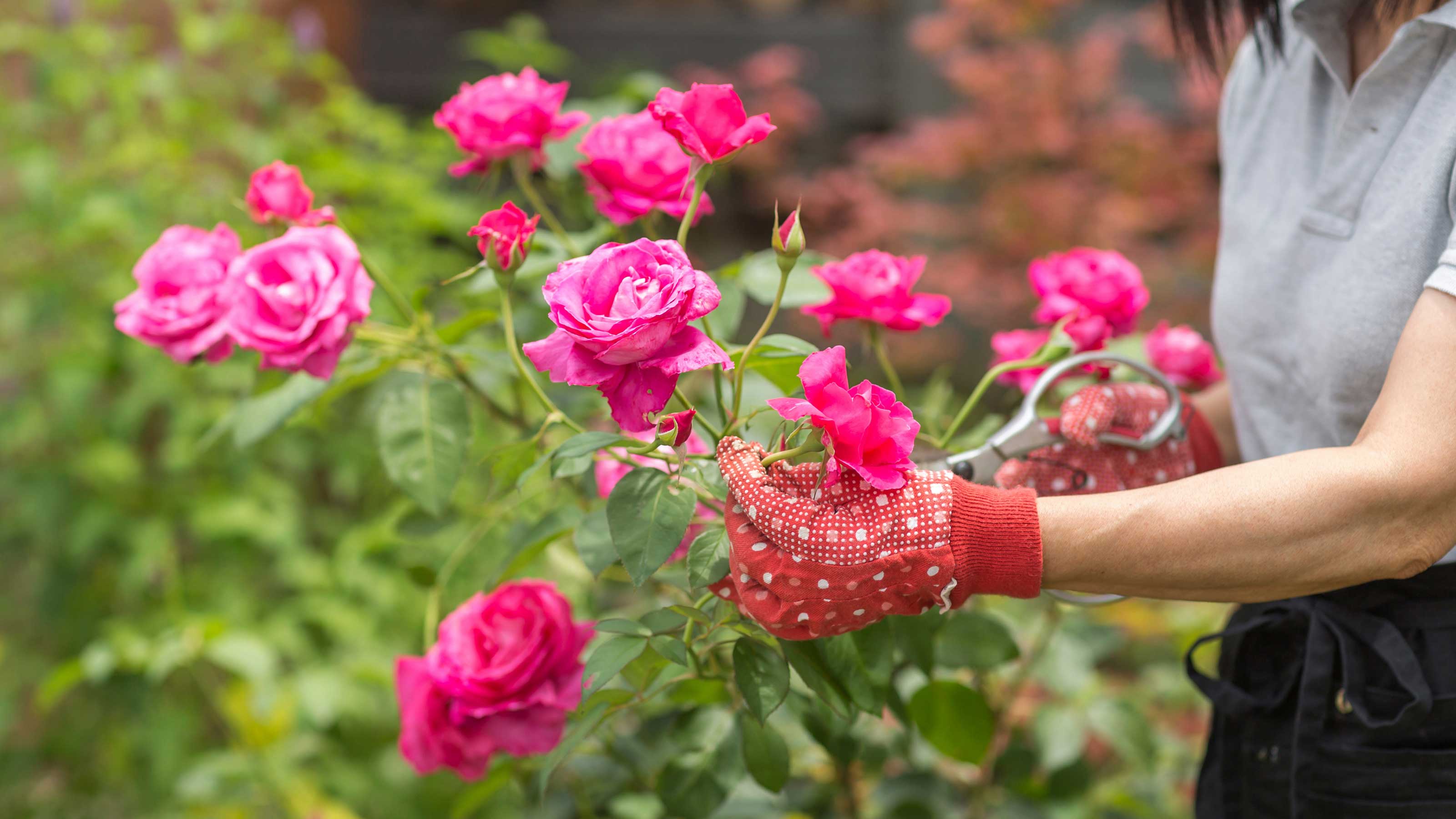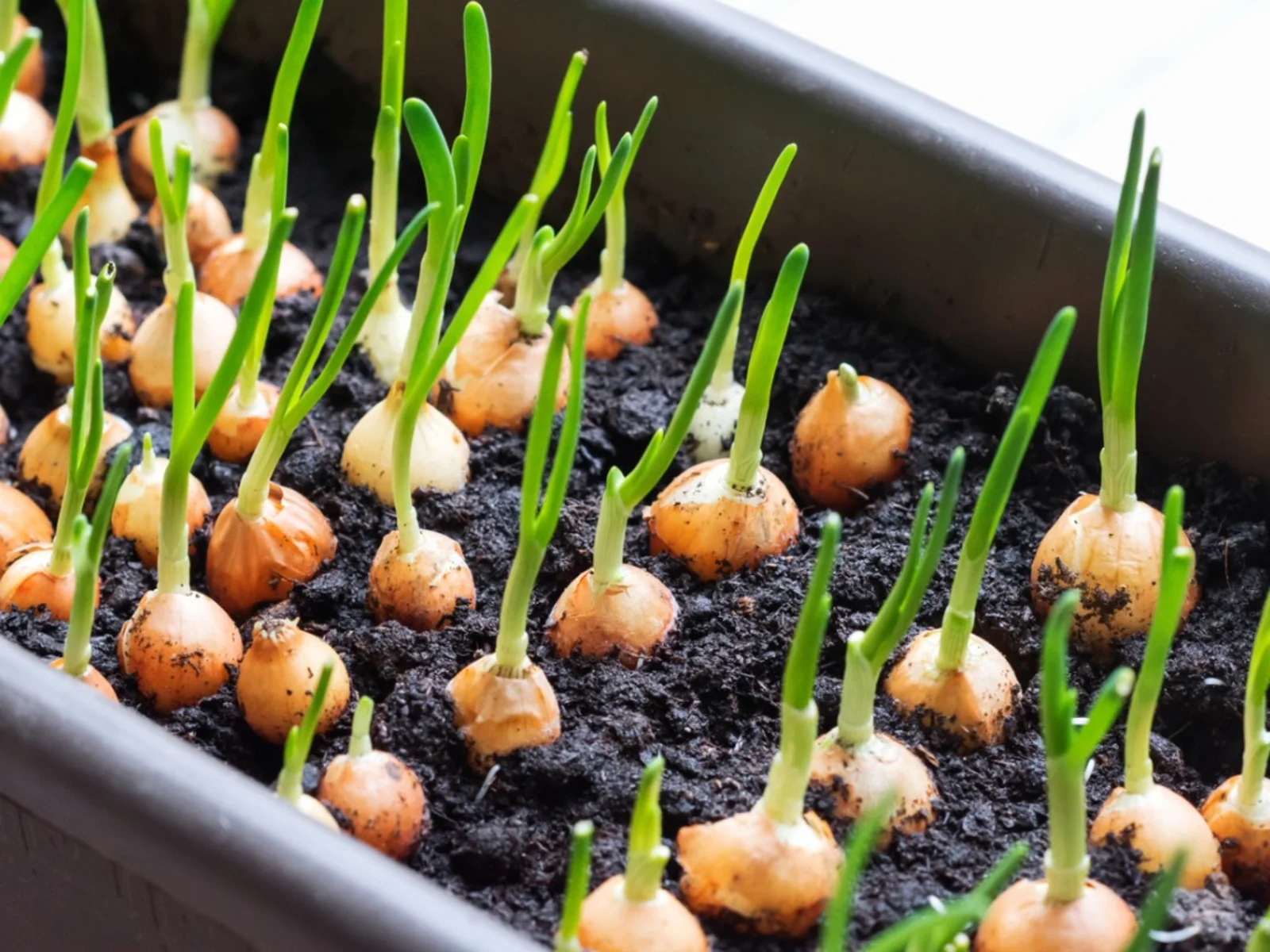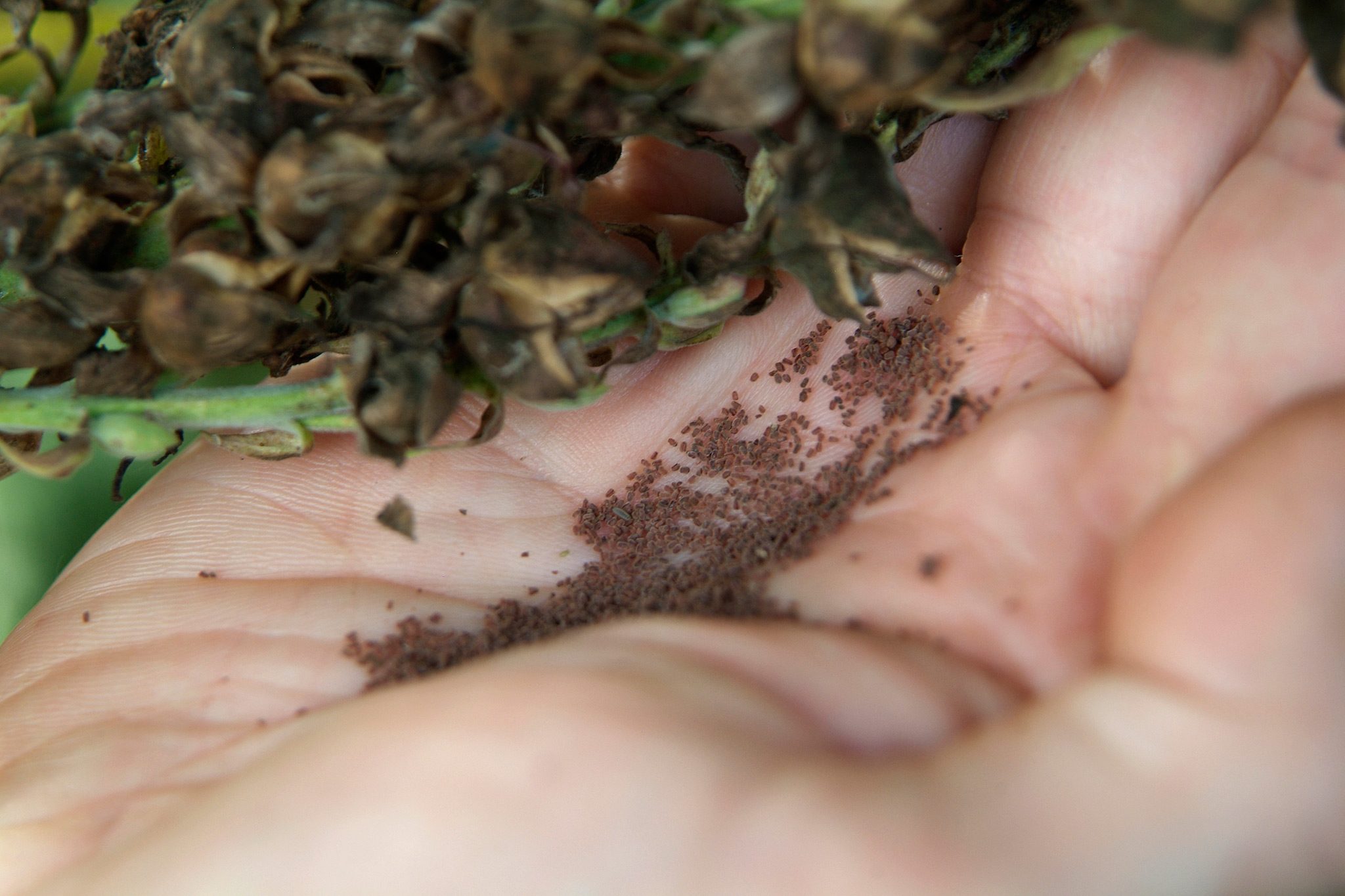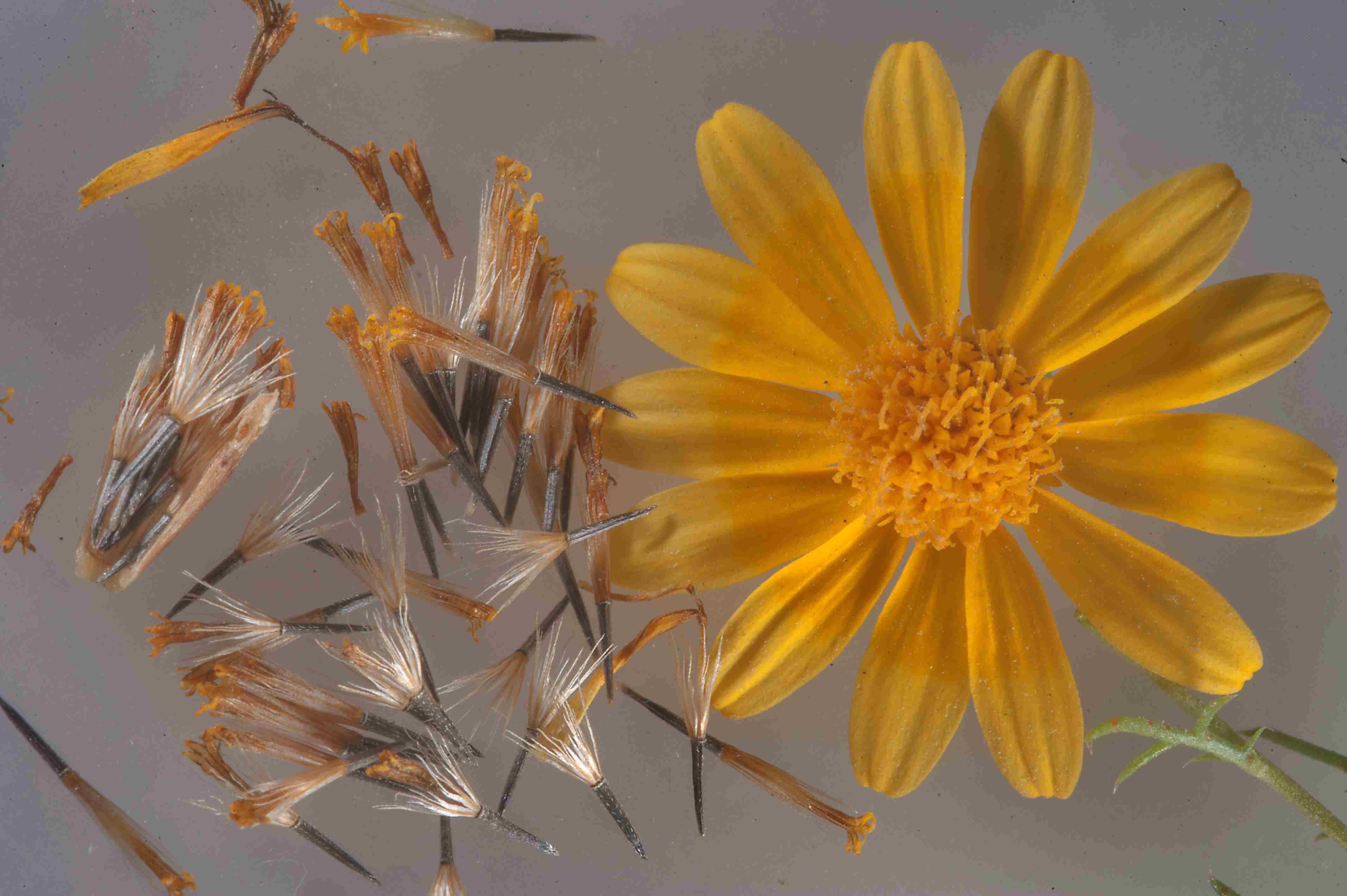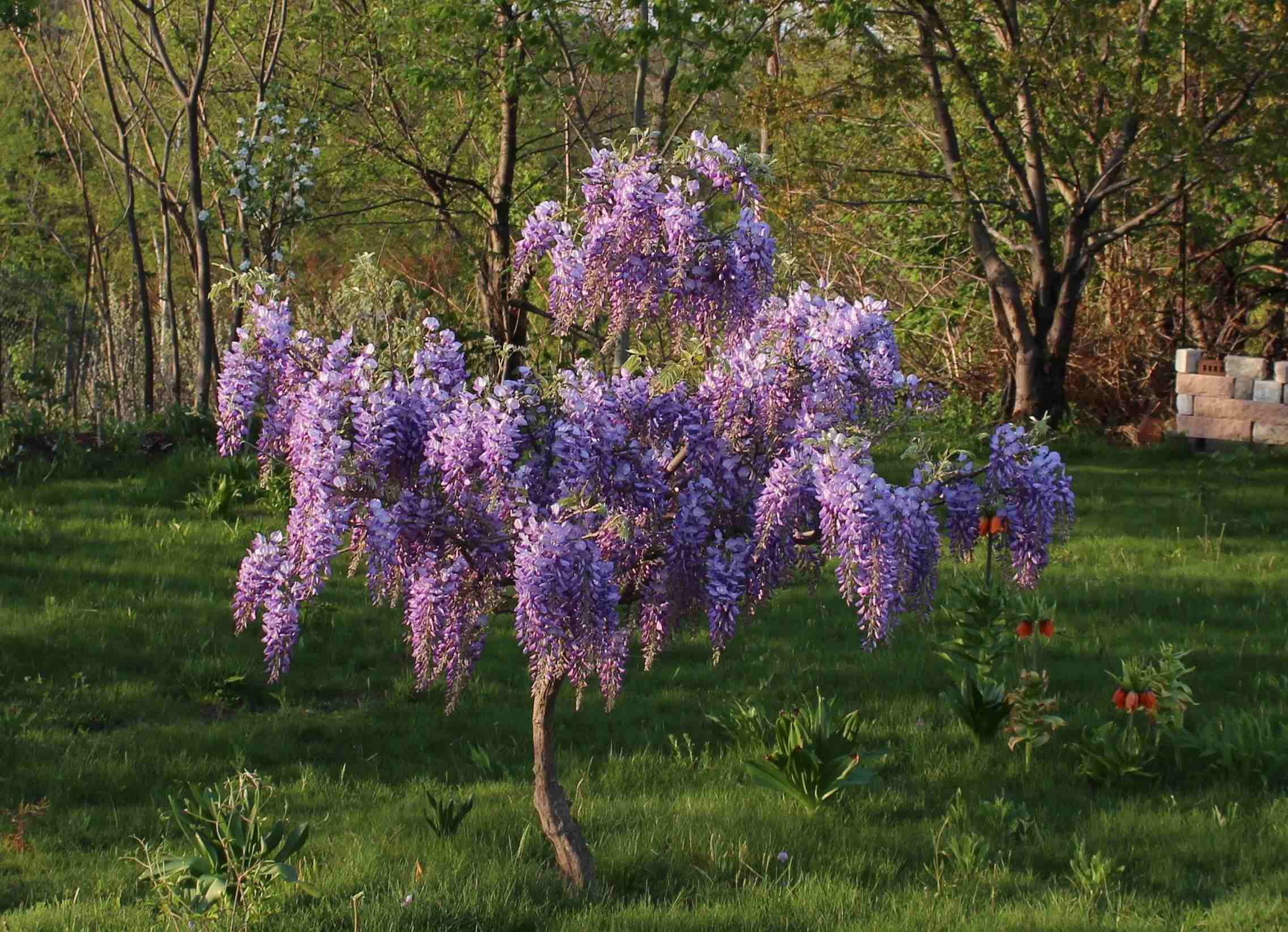Home>Types of Gardening>Ornamental Gardening>How To Collect Petunia Seeds
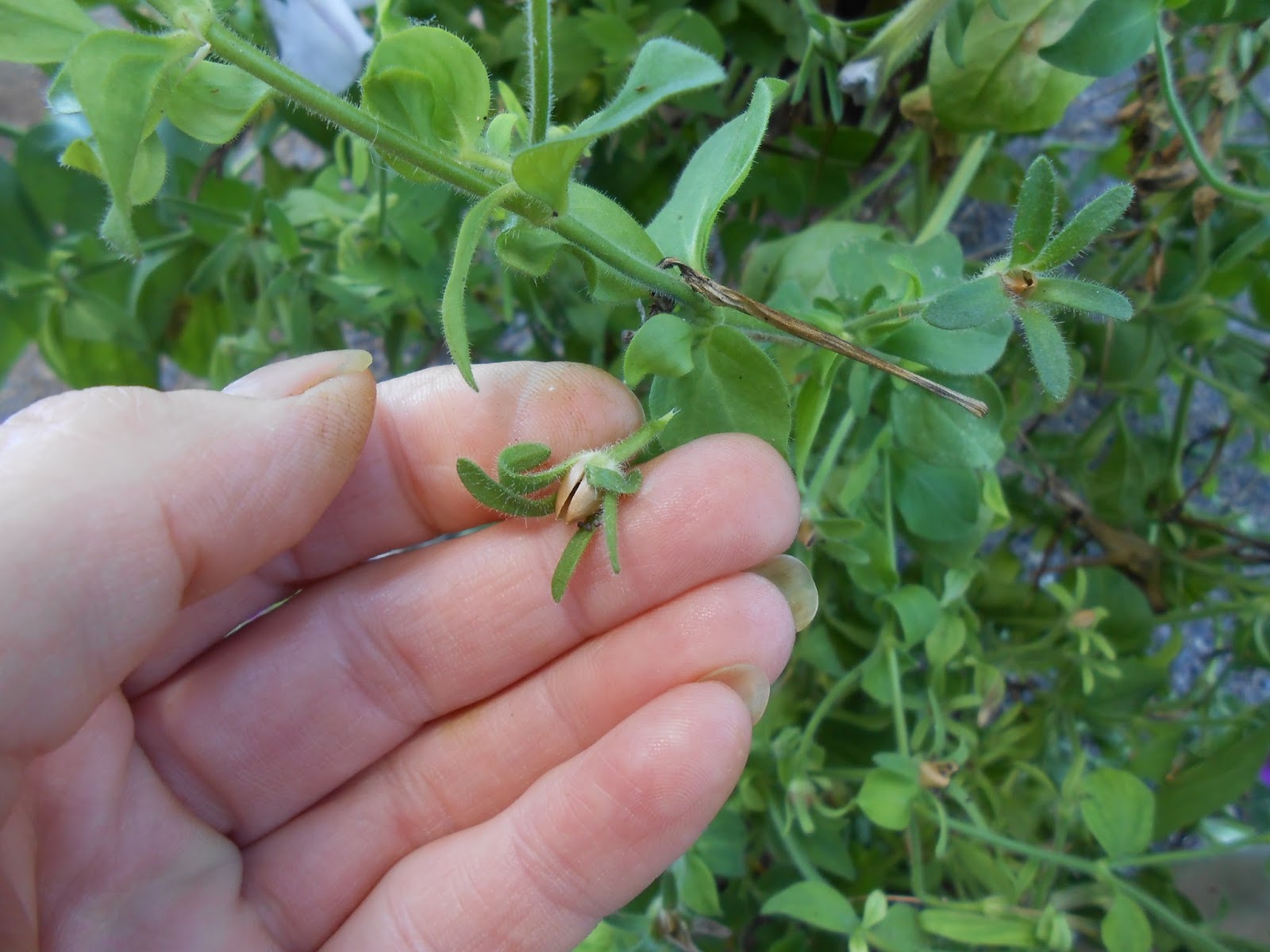

Ornamental Gardening
How To Collect Petunia Seeds
Published: September 16, 2023
Learn how to collect petunia seeds and incorporate them into your ornamental gardening projects. Discover the step-by-step process and tips for successful seed harvesting.
(Many of the links in this article redirect to a specific reviewed product. Your purchase of these products through affiliate links helps to generate commission for Chicagolandgardening.com, at no extra cost. Learn more)
Table of Contents
- Introduction
- Understanding Petunia Seeds
- Choosing the Right Petunia Varieties to Collect Seeds From
- Proper Timing for Collecting Petunia Seeds
- Identifying and Preparing a Healthy Petunia Plant for Seed Collection
- Step-by-Step Guide to Collecting Petunia Seeds
- Storing and Preserving Petunia Seeds
- Troubleshooting: Common Issues and Solutions during Petunia Seed Collection
- Frequently Asked Questions about Collecting Petunia Seeds
- Conclusion
Introduction
Welcome to the fascinating world of ornamental gardening and the art of collecting petunia seeds! Whether you are a seasoned ornamental gardener or a beginner looking to create a more vibrant and diverse garden, collecting petunia seeds is a rewarding and budget-friendly way to expand your plant collection.
Petunias are a popular choice among garden enthusiasts due to their vibrant colors, beautiful blooms, and ease of cultivation. While purchasing petunia plants from local nurseries and garden centers is convenient, it can be costly. By learning how to collect petunia seeds, you can not only save money but also explore a wider range of petunia varieties that may not be readily available.
In this article, we will guide you through the process of collecting petunia seeds, from understanding the anatomy of the seeds to identifying healthy plants for seed collection. We will also provide you with essential tips and techniques to ensure successful seed collection and share valuable insights to troubleshoot common issues along the way.
Whether you are interested in preserving the genetics of a unique petunia variety or simply curious about trying your hand at seed saving, we are here to help. Let’s dive into the world of petunia seed collection and unleash your inner gardener!
Understanding Petunia Seeds
Before embarking on the journey of collecting petunia seeds, it’s essential to have a basic understanding of the structure and characteristics of these tiny marvels. Petunia seeds are small, often resembling tiny dust particles. They come in various shapes, ranging from round to oblong, and their colors can range from black to brown to pale cream.
The seeds contain all the genetic information necessary for the development of a new petunia plant. Each seed consists of an outer protective coat, an embryo, and stored nutrients, which nourish the embryo as it develops. Understanding the anatomy of petunia seeds will help you identify mature and viable seeds during the collection process.
Petunia plants are capable of producing a significant number of seeds, making them ideal for seed collection. Gathering seeds from your own petunia plants allows you to preserve unique characteristics, such as color patterns or growth habits, that may not be found in commercially available varieties.
It’s important to note that petunias are typically classified into two main types: heirloom (open-pollinated) and hybrid varieties. Heirloom petunias produce seeds that will grow into plants similar to their parent plant when they are pollinated naturally. On the other hand, hybrid petunias are the result of cross-pollination between different varieties and may not produce true-to-type offspring.
Collecting and saving seeds from hybrid petunias may result in plants with different characteristics compared to the parent plant. However, experimenting with hybrid seeds can lead to exciting discoveries and unique variations, making the process of collecting and growing petunia seeds all the more interesting.
Now that we have a better understanding of petunia seeds and their potential, let’s move on to the next section, where we will explore how to choose the right petunia plants for seed collection.
Choosing the Right Petunia Varieties to Collect Seeds From
When it comes to collecting petunia seeds, selecting the right varieties is crucial. Whether you have specific traits in mind or simply want to experiment with different colors and patterns, choosing the right petunia varieties will greatly impact the success and satisfaction of your seed collection efforts.
One of the key considerations when selecting petunia varieties for seed collection is the type of petunia: heirloom or hybrid. Heirloom varieties, also known as open-pollinated varieties, can produce offspring that are similar to the parent plants if they are not cross-pollinated with other varieties. These types of petunias are a great choice if you want to preserve specific traits or cultivars in your garden.
On the other hand, hybrid petunias are the result of controlled cross-pollination between different varieties to achieve desired traits, such as unique colors or larger blooms. Collecting and saving seeds from hybrid petunias can yield interesting results, as the offspring may exhibit a combination of characteristics from the parent plants. Experimentation with hybrid varieties can lead to exciting new petunia hybrids and a sense of discovery in your garden.
When choosing petunia varieties for seed collection, consider your personal preferences and gardening goals. Decide whether you want to focus on a specific color palette, growth habit, or bloom size. Additionally, take into consideration the climate and growing conditions in your region, as certain petunia varieties may be better suited for your specific environment.
Another factor to consider is the overall health and vigor of the petunia plants you are considering for seed collection. Choose plants with strong, robust growth and healthy foliage. Avoid plants that show signs of diseases or pest infestations, as these attributes can negatively impact the quality of the seeds.
Researching different petunia varieties and their characteristics can be helpful in making informed decisions. Consult gardening resources, online catalogs, and the expertise of experienced gardeners to gather information about the petunia varieties you are interested in collecting seeds from.
By carefully selecting the right petunia varieties, you can ensure a successful and enjoyable seed collection experience. In the next section, we will discuss the proper timing for collecting petunia seeds.
Proper Timing for Collecting Petunia Seeds
Timing plays a crucial role when it comes to collecting petunia seeds. Harvesting the seeds at the right time ensures that they are mature and viable, allowing for successful germination and healthy plant development. To determine the proper timing for seed collection, it’s important to understand the life cycle of petunias.
Petunias are annual plants, meaning they complete their entire life cycle within one year. They typically start from seeds or seedlings, grow and bloom throughout the summer, and produce mature seeds towards the end of the season. To collect petunia seeds, it’s essential to wait until the seed pods have fully developed and the seeds inside them have reached maturity.
The timing for collecting petunia seeds can vary depending on the specific variety and growing conditions. As a general rule of thumb, you should aim to collect the seeds when the petals of the petunia flowers have fallen off, and the seed pods have turned brown or tan in color. The seed pods will also feel dry and brittle to the touch.
Be patient and observe your petunia plants closely as they progress through their life cycle. As the flowers fade and the seed pods develop, monitor the color and texture of the pods regularly. Once the seed pods have changed color and become dry and crispy, it’s a good indication that they are ready for seed collection.
Avoid collecting petunia seeds too early when the pods are still green or if they feel moist, as this indicates that the seeds are not fully mature and may not germinate successfully. Harvesting the seeds too late when the pods have opened and dispersed the seeds naturally can also result in loss of seeds.
Keep in mind that petunia plants may continue to produce new flowers and seed pods throughout the growing season. To maximize your seed collection, you can either collect seeds from individual seed pods as they mature or wait until the end of the season to gather seeds from all viable seed pods.
In the next section, we will explore how to identify and prepare a healthy petunia plant for seed collection, ensuring the best possible seeds for your future gardening endeavors.
Identifying and Preparing a Healthy Petunia Plant for Seed Collection
Before embarking on the process of collecting petunia seeds, it is important to identify and select healthy plants that will produce viable seeds. Healthy plants are more likely to yield strong, resilient seeds that will germinate successfully and grow into thriving plants.
Here are some key points to consider when identifying and preparing a healthy petunia plant for seed collection:
- Choose plants with vigorous growth: Look for petunia plants that demonstrate strong and vigorous growth. Healthy plants will have sturdy stems, lush foliage, and an overall robust appearance. Avoid selecting weak or stunted plants, as they may produce lower quality or less viable seeds.
- Inspect the foliage: Examine the leaves of the petunia plant for any signs of disease, insect damage, or discoloration. Healthy plants will have vibrant and uniform-colored leaves. Avoid plants with yellowing or wilting leaves, as these may indicate underlying health issues.
- Check for flowers with desirable traits: If you have specific traits or characteristics in mind for your seed collection, such as unique flower color, shape, or size, choose plants that exhibit those traits. This will ensure that the collected seeds will carry the desired characteristics in their offspring.
- Look for pollinators: Petunias are typically pollinated by insects, primarily bees and butterflies. The presence of pollinators around the plant is a positive indication of its health and fertility. If you notice an abundance of bees or other pollinators visiting the petunia flowers, it is a good sign that the plant is healthy and capable of producing viable seeds.
- Provide optimal growing conditions: To ensure the health and vitality of your petunia plants, provide them with appropriate growing conditions. This includes providing adequate sunlight, well-draining soil, and regular watering. Healthy plants that receive optimal care are more likely to produce high-quality seeds.
Once you have selected a healthy petunia plant for seed collection, it’s important to prepare the plant for the process. Start by removing any spent flowers or seed pods that have already started to disperse their seeds. This will prevent cross-pollination and ensure that you are collecting seeds only from the desired plant.
If the plant has multiple seed pods at different stages of development, you can either choose to collect seeds from each pod as they mature or wait until all the seed pods are fully developed before harvesting. Collecting seeds from each individual pod allows you to select the healthiest and most robust seeds, while waiting until all the pods are ready simplifies the seed collection process.
In the next section, we will provide a step-by-step guide to collecting petunia seeds effectively, ensuring a successful collection for your gardening ventures.
Step-by-Step Guide to Collecting Petunia Seeds
Collecting petunia seeds can be a straightforward process when you follow a step-by-step approach. By following these guidelines, you can ensure a successful seed collection and preserve the genetic diversity of your petunia plants.
Here is a step-by-step guide to collecting petunia seeds:
- Identify mature seed pods: Begin by identifying seed pods that have turned brown or tan in color and are dry and brittle to the touch. These are indicators that the seeds inside are fully mature and ready for collection. Remove any young or green seed pods, as they are not yet developed enough to produce viable seeds.
- Gently remove the seed pods: Using clean, sharp scissors or pruners, carefully cut the stem of the seed pod just below the base. Make sure to handle the seed pods with care to avoid damaging them and causing premature seed dispersal.
- Bring the seed pods indoors: Once you have collected the seed pods, bring them indoors to a clean, dry surface like a plate or tray. This will make it easier to work with the seeds and prevent any loss due to wind or other factors.
- Open the seed pods: Take each seed pod and gently break it open with your fingers or a small knife. Inside the seed pod, you will find the mature seeds. Remove the seeds and place them in a clean container, such as a small envelope or seed packet. Discard any remaining parts of the seed pod.
- Allow the seeds to air dry: Once you have gathered all the seeds, allow them to air dry for a few days in a cool, well-ventilated area. This will help remove any remaining moisture and ensure that the seeds are fully dry before storage. Avoid using heat or direct sunlight to dry the seeds, as excessive heat can damage their viability.
- Label and store the seeds: After the seeds have dried completely, label the container with the date and the petunia variety. This will help you keep track of the collected seeds. Store the seeds in a cool, dry place, such as a sealed glass jar or a resealable plastic bag. Properly stored petunia seeds can remain viable for several years.
By following these steps, you can successfully collect and preserve petunia seeds for future planting. Remember to always work with clean tools and containers to prevent the transfer of diseases or unwanted debris to the seeds. Patience and attention to detail will ensure the best results when collecting petunia seeds.
In the next section, we will delve into the important topic of storing and preserving petunia seeds, ensuring their longevity and viability.
Storing and Preserving Petunia Seeds
Proper storage and preservation techniques are key to maintaining the viability and longevity of petunia seeds. By following these guidelines, you can ensure that your collected seeds remain viable for future planting and successful germination.
Here are some important tips for storing and preserving petunia seeds:
- Ensure complete dryness: Before storing the seeds, ensure that they are completely dry. Any moisture left in the seeds can lead to mold or premature germination. Make sure to air dry the seeds thoroughly for a few days before storing them.
- Use airtight containers: To protect the seeds from moisture and humidity, store them in airtight containers. Glass jars with tight-fitting lids or resealable plastic bags are excellent choices. Make sure the containers are clean, dry, and labeled with the date and petunia variety.
- Keep in a cool, dark place: Proper storage conditions are essential for preserving seed viability. Store the containers of petunia seeds in a cool, dark place, such as a refrigerator or a cool basement. The temperature should be consistently cool (around 40 to 50 degrees Fahrenheit) to prevent seed deterioration.
- Avoid temperature fluctuations: It’s important to minimize temperature fluctuations, as they can negatively affect seed viability. Avoid placing the seed containers in areas that experience frequent temperature changes, such as near ovens, heaters, or windows.
- Protect from pests: Petunia seeds can be attractive to pests, such as insects or rodents. Prevent unwanted infestations by placing a small packet of silica gel or some dried herbs, like lavender or cedar chips, in the container along with the seeds. This can help repel pests and maintain seed quality.
- Regularly check for viability: Over time, germination rates of stored seeds may decrease. To ensure the viability of your petunia seeds, periodically perform a germination test. Place a few seeds on a damp paper towel, seal it in a plastic bag, and keep it in a warm area. Check for germination after a week. If the majority of seeds germinate, the storage conditions are suitable, and the seeds can still be used.
Following these storage and preservation practices will help maximize the lifespan and viability of your collected petunia seeds. It is also a good idea to keep a record of the storage dates and periodically rotate your seed stock to ensure freshness.
In the next section, we will address common issues and provide solutions that may arise during the petunia seed collection process.
Troubleshooting: Common Issues and Solutions during Petunia Seed Collection
While collecting petunia seeds can be a straightforward process, occasionally, you may encounter some challenges along the way. Understanding and addressing common issues can help ensure a successful seed collection endeavor. Here are some common problems that may arise during petunia seed collection and their corresponding solutions:
- Premature seed dispersal: Sometimes, petunia seed pods may open and disperse their seeds before you have a chance to collect them. To prevent this, regularly monitor the seed pods for signs of maturity. If you notice that the pods are starting to open and release seeds, promptly collect the remaining pods and harvest the seeds indoors.
- Poor seed viability: The viability of petunia seeds can vary depending on factors such as plant health, pollination, and storage conditions. If you find that the collected seeds have low germination rates, consider improving your plant selection process, ensuring proper pollination, and optimizing storage conditions. Conducting regular germination tests on a small sample of seeds will also help identify any viability issues.
- Cross-pollination: Petunias are known for their ability to cross-pollinate readily. If you are collecting seeds from different petunia varieties, there is a chance of unintentional cross-pollination, resulting in seeds with unpredictable characteristics. To minimize cross-pollination, consider isolating different petunia varieties by covering them with mesh or cloth to prevent insects from transferring pollen.
- Disease or pest infestation: Petunias can be susceptible to various diseases and pests, which can impact seed quality. If you notice signs of disease or pest infestation on the plants or seed pods, take appropriate measures to address the issue. This may include removing and destroying affected plant parts, using organic pest control methods, or seeking guidance from a local extension service or gardening professional.
- Inconsistent seed maturity: Petunia plants can have seed pods at different stages of development simultaneously, making it challenging to collect seeds at the optimal maturity. To address this issue, you can either collect seeds from each individual pod as they mature or wait until all the seed pods on the plant are fully developed before harvesting. Both approaches have their advantages, so choose the method that suits your preferences and convenience.
By being aware of these common issues and employing the appropriate solutions, you can overcome challenges and increase your chances of a successful petunia seed collection experience. Remember that gardening is a continuous learning process, and every challenge presents an opportunity for growth and improvement.
In the next section, we will address some frequently asked questions related to collecting petunia seeds, providing additional insights into this rewarding practice.
Frequently Asked Questions about Collecting Petunia Seeds
Collecting petunia seeds can be an exciting and rewarding endeavor. As with any gardening practice, it is common to have questions along the way. Here are some frequently asked questions about collecting petunia seeds, along with their answers:
- Q: Can I collect seeds from any type of petunia?
A: Yes, you can collect seeds from both heirloom (open-pollinated) and hybrid petunias. However, it’s important to note that collecting seeds from hybrid petunias may result in offspring with different characteristics compared to the parent plant. - Q: When is the best time to collect petunia seeds?
A: The ideal time to collect petunia seeds is when the seed pods have turned brown or tan in color, and the pods feel dry and brittle to the touch. This indicates that the seeds inside are mature and ready for collection. - Q: How long can I store collected petunia seeds?
A: Petunia seeds, when properly stored in cool and dry conditions, can remain viable for several years. However, it’s a good practice to periodically conduct germination tests to determine the viability of stored seeds. - Q: How do I know if the collected petunia seeds are viable?
A: To test the viability of petunia seeds, place a few seeds on a damp paper towel, seal them in a plastic bag, and keep them in a warm area. Check for germination after a week. If the majority of seeds germinate, then the seeds are viable. - Q: Can I collect seeds from petunias grown in containers?
A: Yes, you can collect seeds from petunias grown in containers just like those grown in the ground. Ensure that the container-grown petunias have healthy growth and wait for the seed pods to reach maturity before collecting the seeds.
Remember that experimentation and observation are key when it comes to collecting petunia seeds. Each garden and region may have unique considerations, so don’t hesitate to adapt the process to suit your specific circumstances.
If you have additional questions or need further guidance, reach out to local gardening resources or fellow gardeners who may have experience with petunia seed collection. They can provide valuable insights and advice based on their own experiences.
Congratulations on delving into the world of petunia seed collection! With care and attention, you can expand your garden and add a personal touch to your ornamental gardening endeavors.
Conclusion
Collecting petunia seeds is a gratifying and cost-effective way to expand your garden and explore the beauty of these vibrant flowers. By understanding the anatomy of petunia seeds, choosing the right varieties, and collecting them at the proper time, you can maximize your success in seed collection. Identifying and preparing healthy plants for seed collection ensures the best quality seeds for future growth.
Follow the step-by-step guide to collect petunia seeds effectively, taking care to store and preserve them in optimal conditions. Troubleshoot common issues that may arise, such as premature seed dispersal or poor seed viability, to overcome challenges and improve your results.
Remember, be patient and stay curious. Collecting petunia seeds allows you to preserve unique characteristics, experiment with hybrids, and unlock new and exciting variations in your garden. Don’t hesitate to seek advice or consult local resources to further enhance your petunia seed collection journey.
Now armed with the knowledge and skills to collect and store petunia seeds, you can embark on this gardening adventure. Enjoy the process of preserving the beauty of petunias and the thrill of successfully germinating your collected seeds.
Happy collecting and happy gardening!

